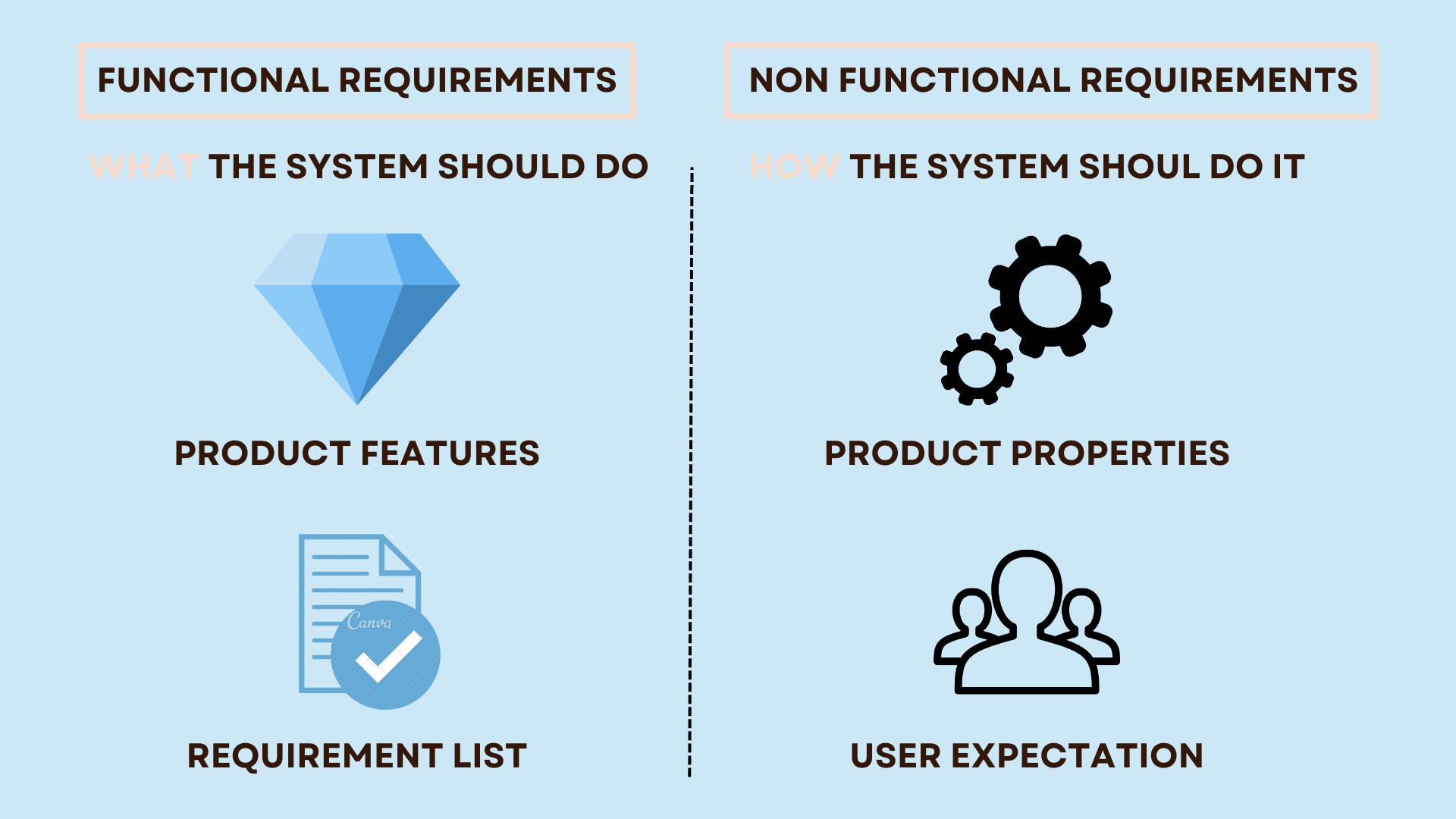Mastering Software Engineering: Diagrams, Models, and Testing Techniques
Functional and Non-Functional Requirements in Software Engineering

Introduction
Functional requirements define a system or its component i.e. how the system must work whereas non-functional requirements define the quality attribute of a system i.e. how the system should perform. Functional requirements are mandatory needs without which the system will not work but non-functional requirements can be met to a certain level. In order to perform efficiently a system should be able to meet both its functional and non-functional requirements.
The following sections describe functional requirements, and non-functional requirements and debate their differences in detail.
Functional requirements in software engineering
These are the basic demands of the end user that are to be met by the system. All these functionalities need to be necessarily incorporated into the system as a part of the contract. These are basically represented in the form of input to be given to the system, the operation performed and the output expected.
Examples:
- Applicant’s dashboard page
- A feature to filter and customize the posted data based on specific descriptions.
Non Functional Requirements in software engineering
These are requirements that specify criteria that can be used to judge the operation of the system rather than specific behaviors. They are usually architecturally significant requirements. The extent to which these factors are implemented varies from project to project. They are also known as non-behavioral requirements.
Examples:
- The processing of each request within 10 seconds.
- Database security must meet HIPAA requirements.
Informally these are sometimes called the “ilities”, from attributes like
- Portability
- Security
- Maintainability
- Reliability
- Scalability
- Performance
- Reusability
- Flexibility
Differences
The following table lists out the differences between functional and non-functional requirements
Applications
- Helps you to verify the performance of the system.
- It ensures that the customer or end-user is satisfied
- It produces a defect-free product or software.
Conclusion
Requirements analysis is a very critical process that enables the success of a system or software project to be assessed. It ensures that the software/product works as expected. Though Non-functional requirements are not as mandatory as functional requirements both are equally important for the efficiency of the software.
